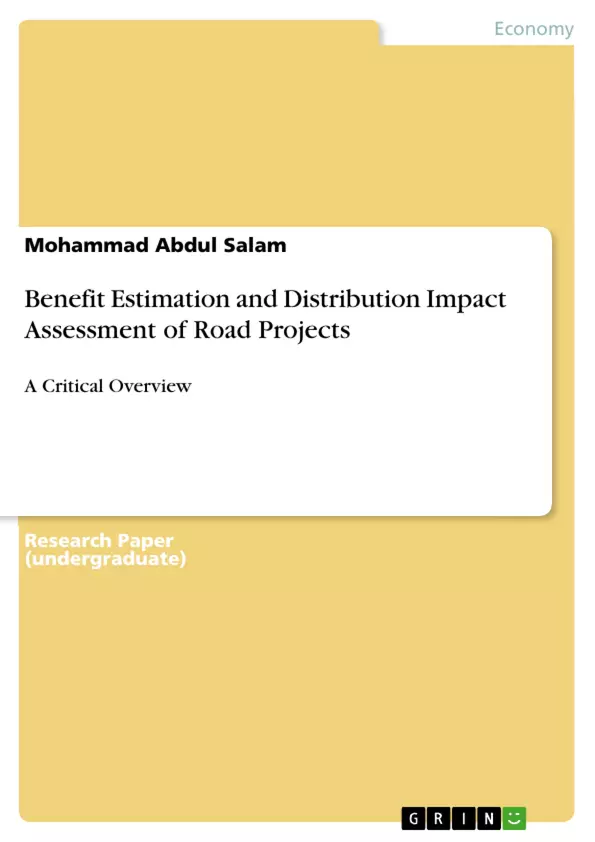The analysis focuses on two key areas i.e., benefit estimation and distribution analysis of rural road projects. Benefits estimation is fundamental to make a decision on acceptability of any road projects. Benefit considers the profits from time saving, cost saving, and saving from accident costs along with other indirect benefits. Distribution analysis pursues to distribute the net benefits or loses created by the project from primary or secondary level. The distribution analysis is worthwhile for policymakers because it permits them to measure whether the prospective distribution of net benefits. Therefore, a sound roads impact evaluation is commanding to project appraisal and policy decision. The data gathering is also imperative for assessing the public benefits but the reliable data and the appropriate approaches are far-reaching in road projects particularly rural roads.
Inhaltsverzeichnis (Table of Contents)
- 1.0 INTRODUCTION
- 12.0 BENEFITS ESTIMATION
- 2.1 Direct Benefits
- 2.2 Indirect Benefits
- 3.0 DISTRIBUTION ANALYSIS
Zielsetzung und Themenschwerpunkte (Objectives and Key Themes)
This report aims to provide a critical overview of benefit estimation and distribution impact assessment of rural road projects. The report focuses on the rationale behind these assessments and their importance in decision-making for road projects.
- Benefits estimation of road projects, including direct and indirect benefits.
- Distribution analysis of road projects, including identifying beneficiaries and losers.
- The role of road projects in poverty reduction.
- The challenges associated with benefit estimation and distribution analysis.
- The importance of considering both economic and social impacts of road projects.
Zusammenfassung der Kapitel (Chapter Summaries)
The introduction section provides an overview of the importance of economic analysis in project decision-making, highlighting the focus on rural road projects and their potential benefits and impacts. The chapter on benefits estimation explores various approaches to measuring the benefits of road projects, including consumer surplus, producer surplus, human capital, cost-savings, and multi-criteria analysis. It also discusses the distinction between direct and indirect benefits, providing examples of each. The distribution analysis chapter delves into the assessment of how benefits are distributed among stakeholders, emphasizing the importance of identifying beneficiaries and losers and the role of distribution analysis in project sustainability.
Schlüsselwörter (Keywords)
The report focuses on key terms and concepts such as benefit estimation, distribution analysis, rural road projects, direct and indirect benefits, consumer surplus, producer surplus, human capital, cost-savings, multi-criteria analysis, poverty reduction, stakeholders, and project sustainability.
- Citar trabajo
- Mohammad Abdul Salam (Autor), 2015, Benefit Estimation and Distribution Impact Assessment of Road Projects, Múnich, GRIN Verlag, https://www.grin.com/document/304281



